2024 NFL Draft: Ideal top two picks for every team
As we approach the concluding phase of the prospect-evaluation period, all teams are preparing their boards, considering all potential outcomes, and envisioning how the 2024 NFL Draft could play out in their favor.
In this exercise, I realize those dreams by allocating this year’s top prospects across all 32 teams. I provide each organization with optimal picks for their first two draft slots.
In this process, I maintained a level of realism by assigning each player only once and making logical predictions about where prospects may be picked. At times, I also noted instances where teams may need to trade up to secure a certain prospect.
Some excellent players are not listed below because four teams (the Cardinals, Commanders, Eagles and Packers) currently own three picks in the top two rounds, and I wanted to account for the likelihood that they will grab top talent with that third premium pick. For this reason, receiver Ladd McConkey, edge rusher Adisa Isaac, linebacker Trevin Wallace, running back Jaylen Wright and offensive lineman Cooper Beebe are not included.
AFC TEAMS

Round 1: No. 30 overall — Tyler Guyton, OT, Oklahoma
Round 2: No. 62 overall — Devontez Walker, WR, North Carolina
Left tackle Ronnie Stanley has missed 36 games due to injuries over the past four seasons, and Baltimore traded right tackle Morgan Moses to the Jets this offseason. They should love finding the large (6-foot-8, 322 pounds) and agile (he performed the three-cone drill in 7.5 seconds) Guyton, who can play on either side of the line, available late in the first. Walker could be a steal late in the second round for a Ravens squad in need of another receiver. Second-year star Zay Flowers could make plays from the slot with Walker and Rashod Bateman, who is entering a contract year, lining up outside.

Round 1: No. 28 overall: Brian Thomas Jr., WR, LSU
Round 2: No. 60 overall: Javon Bullard, S, Georgia
The trade of Stefon Diggs makes it a necessity to find a receiver with one of their first two picks. The Bills would likely have to move up to acquire Thomas, but general manager Brandon Beane has been willing to trade up for “his guy” in the past. The LSU wideout would play the deep-threat role that was once inhabited by Gabe Davis, with free-agent signee Curtis Samuel being Josh Allen‘s safety valve. Bullard is an effective slot defender who also makes plays downfield and tackles running backs well in space. He’ll fit in with Mike Edwards and Taylor Rapp as they take over for former starters Micah Hyde and Jordan Poyer.

Round 1: No. 18 overall: JC Latham, OT, Alabama
Round 2: No. 49 overall: Troy Franklin, WR, Oregon
Trent Brown was signed this offseason to compete for the starting right tackle job after Jonah Williams moved on as a free agent, but his injury history means the team should add a rookie to the mix. Latham is a stout pass protector and dominant run blocker who can take the line to the next level. Tee Higgins is scheduled to play on the franchise tag this season but could be moved if a strong deal is offered. Franklin’s speed (4.41-second 40-yard dash) and after-the-catch elusiveness would help take pressure off Ja’Marr Chase in 2024 and beyond.
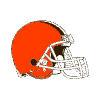
Round 2: No. 54 overall: Payton Wilson, LB, North Carolina State
Round 3: No. 85 overall: Kiran Amegadjie, OT, Yale
Wilson’s speed (4.43 40) and production (138 tackles last season) make him a bargain if available midway through the second round. Adding his nose for the ball and coverage ability alongside Jeremiah Owusu-Koramoah (who is heading into the final year of his rookie deal) and veteran Jordan Hicks bolsters the Browns’ second-level defense. Amegadjie is an intriguing prospect with plus length (36 1/8-inch arms) and agility who will be a valuable contributor if Jedrick Wills, Jack Conklin and/or Dawand Jones lose time to injury again this season.
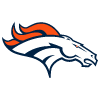
Round 1: No. 12 overall: Michael Penix Jr., QB, Washington
Round 3: No. 76 overall: Jalyx Hunt, Edge, Houston Christian
It’s challenging for me to consider Penix for the first round due to his history of injuries, but the Broncos’ quarterback requirement makes it hard to overlook him. Sean Payton, the head coach, could create a robust offensive line for Penix, mirroring the protection he provided for the accurate pocket passer Drew Brees in New Orleans. Hunt, who began as a safety at Cornell, has developed into an edge force, recording 20.5 tackles for loss along with 13.5 sacks for the Huskies in his previous two seasons. His arm length of 34 3/8-inch and speed of 4.64 40 make him a valuable third-round pick for the Broncos who are in desperate need of a pass rusher.
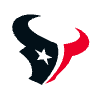
Round 2: No. 42 overall: Cam Hart, CB, Notre Dame
Round 2: No. 59 overall: Edgerrin Cooper, LB, Texas A&M
Trading for receiver Stefon Diggs allows the Texans to address other needs with their two second-round selections. Hart’s combination of size (6-3, 202 pounds with 33-inch arms) and speed (4.5 40) make him a nice fit in Houston, especially with free-agent signees Jeff Okudah and C.J. Henderson coming off injury-shortened seasons. Cooper’s speed (he put up a 4.51 40 at 230 pounds) could earn him a second-round slot, setting him up to attack plays in the backfield and to the boundary in DeMeco Ryans’ defense.
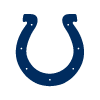
Round 1: No. 15 overall: Terrion Arnold, CB, Alabama
Round 2: No. 46 overall: Xavier Legette, WR, South Carolina
Arnold’s a fiery competitor who made plays all over the field for Alabama. He could focus on stopping outside receivers, with Kenny Moore II returning to the Colts to man the slot, though the rookie could handle those duties if needed, as well. Arnold’s 4.5 40 speed at the NFL Scouting Combine didn’t impress, but his excellent pro day cemented his top-20 status. Legette’s ability to get past smaller defenders with his long strides, along with his ability to body them up on short and intermediate routes, could get him on the field regularly for a team that relies heavily on three-receiver sets.

Round 1: No. 17 overall: Troy Fautanu, OL, Washington
Round 2: No. 48 overall: Maason Smith, DT, LSU
With Josh Allen locked up via a new, lucrative five-year contract, the Jaguars can focus on the big guys on both sides of the ball early in the draft. Fautanu’s versatility makes him a great fit in Jacksonville, where he could step in at multiple spots as a rookie if injuries hit the offensive line. Cam Robinson and Walker Little are free agents after the season, as well, so Fautanu would be a long-term candidate to play left tackle. Adding Smith’s size (6-5, 306 pounds, 34 1/2-inch arms) after acquiring free agent Arik Armstead should help strengthen the team’s defensive line.

Round 1: No. 32 overall: Xavier Worthy, WR, Texas
Round 2: No. 64 overall: Kamari Lassiter, CB, Georgia
Kansas City might have to move up in the first round — which GM Brett Veach has done in the past, grabbing Patrick Mahomes in 2017 and Trent McDuffie in 2022 — to acquire Worthy, but the Texas receiver’s elite 4.21 40 speed would be such a nice fit in a Chiefs offense that has lacked juice since Tyreek Hill’s departure in 2022. Worthy’s return ability is a bonus, in light of the league’s new kickoff rules. The Chiefs have some players who can make up for the loss of cornerback L’Jarius Sneed, but Lassiter is a potential bargain late in the second round who makes up for average straight-line speed with short-area quickness and tenacity.
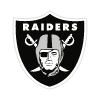
Round 1: No. 13 overall: Taliese Fuaga, OT, Oregon State
Round 2: No. 44 overall: Ennis Rakestraw Jr., CB, Missouri
I’m not projecting trades in this exercise, so the Raiders miss out on the top passers. Fuaga becomes the ideal pick in a less-than-ideal situation, with right tackle Jermaine Eluemenor signing with the Giants this offseason. Fuaga could line up at guard or tackle, depending upon the team’s plan for 2022 seventh-rounder Thayer Munford Jr. Since there are no quarterbacks of value in Round 2, the Raiders pick up a physical cover corner in Rakestraw to improve a thin outside group.
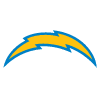
Round 1: No. 5 overall: Malik Nabers, WR, LSU
Round 2: No. 37 overall: Blake Corum, RB, Michigan
The release of Mike Williams and trade of Keenan Allen makes finding a playmaker at receiver an absolute must. Nabers can win off the line with quickness, runs excellent routes and gives quarterback Justin Herbert a reliable target with strong hands at the catch point. Reuniting Corum with Jim Harbaugh is too appealing to ignore. He’s the kind of bell-cow back — with receiving and pass-protection skills — any coach would love.
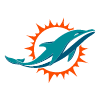
Round 1: No. 21 overall: Jer’Zahn Newton, DT, Illinois
Round 2: No. 55 overall: Ja’Tavion Sanders, TE, Texas
Losing Christian Wilkins in free agency was a major blow to the Dolphins’ defensive line; Newton’s strength and quickness off the ball give him a chance to contribute immediately. Sanders will get down the seam against defenses worried about Tyreek Hill and Jaylen Waddle outside. This seems like an excellent marriage for an already explosive offense.

Round 1: No. 3 overall: Jayden Daniels, QB, LSU
Round 2: No. 34 overall: Amarius Mims, OT, Georgia
NFL Network’s Bridget Condon reported at the NFL Scouting Combine that the Patriots have had interest in Daniels since Bill Belichick was still with the franchise. Daniels’ lean build is similar to Tom Brady’s when he was coming into the league, but the comparisons end there. Daniels can whip the ball from the pocket, and his elite running ability will drive defenses crazy on third down. Mims’ inexperience and 2023 ankle injury (and recent hamstring issue) may cost him a first-round draft slot, but he likely won’t last long in the second round, with the Patriots on the clock with the 34th overall pick. One of the few places his 6-8, 360-pound frame fits perfectly is the space vacated by tackle Trent Brown, who signed with Cincinnati as a free agent this offseason.
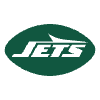
Round 1: No. 10 overall: Brock Bowers, TE, Georgia
Round 3: No. 72 overall: Tyler Nubin, S, Minnesota
In 2020, Aaron Rodgers threw 16 touchdown passes to Green Bay tight ends (Robert Tonyan, Marcedes Lewis, Jace Sternberger and Dominique Dafney). Imagine what a talent like Bowers could do with a healthy Rodgers looking for him in the red zone, on key first downs and longer throws when presenting a mismatch. Nubin’s a ballhawk (13 career INTs) and will do his job in the run game, so it won’t be a surprise if he starts Day 1.

Round 1: No. 20 overall: Graham Barton, C, Duke
Round 2: No. 51 overall: Adonai Mitchell, WR, Texas
Barton played left tackle the last three years for the Blue Devils, but his intelligence, athleticism and willingness to finish blocks should allow him to excel at center, where he started his true freshman season due to health issues along the O-line. Mitchell’s a raw route-runner and can take the top off the defense with his 4.33 40 speed. The Steelers have been drawn to talented pass catchers who are available a bit later than their potential would indicate, so this seems like an excellent fit.
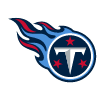
Round 1: No. 7 overall: Joe Alt, OT, Notre Dame
Round 2: No. 38 overall: Marshawn Kneeland, Edge, Western Michigan
Tennessee has not yet found a replacement for Taylor Lewan since releasing him after the 2022 season. It’s tough to picture a more perfect fit than the tall, strong Alt. Kneeland has a shot to be a first-round selection because of his excellent film, length (34 1/2-inch arms) and combine workout (7.02-second three-cone drill at 267 pounds). The Titans should snap him up if he’s around early in the second after losing Denico Autry, the team’s sack leader (11.5) from last season, in free agency.
NFC TEAMS

Round 1: No. 4 overall: Marvin Harrison Jr., WR, Ohio State
Round 1: No. 27 overall: Nate Wiggins, CB, Clemson
The Cardinals have a prime opportunity to trade down for extra picks this year and next. However, if they choose not to, they could greatly benefit from Harrison’s ability to make plays, which is something the team has been lacking for a while. Wiggins is also a standout with his exceptional closing speed and willingness to challenge receivers until the end. His slender build might deter some teams, but given Arizona’s urgent requirement for outside corners, they might be drawn to him towards the end of the first round.
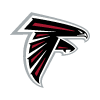
Round 1: No. 8 overall: Dallas Turner, Edge, Alabama
Round 2: No. 43 overall: Kool-Aid McKinstry, CB, Alabama
Turner’s speed (4.46 40) is just what Atlanta requires to enhance their sluggish pass rush. Although not the largest edge defender in the class (6-2 3/4, 247 pounds), he effectively utilizes his 34 3/8-inch arms with a long-arm move and against the run. Like the Lions (2023), Eagles (2021), and Patriots (2021) in recent years, the Falcons have also picked two Alabama players in the first two rounds. McKinstry’s man cover abilities compensate for the loss of Jeff Okudah this offseason.

Round 2: No. 33 overall: Braden Fiske, DT, Florida State
Round 2: No. 39 overall: Ben Sinnott, TE, Kansas State
Signing Derrick Brown to a major extension locks down one spot along the Panthers’ defensive line. Fiske’s athleticism and hustle to the ball makes him a natural to play next to Brown at the 5-technique. The Panthers may still be able to select him if they trade down a few spots to acquire extra mid-round picks. Sinnott is an underappreciated prospect whose quickness from his stance, strong hands and skills as a move blocker compare favorably to last year’s rookie sensation, Sam LaPorta.

Round 1: No. 1 overall: Caleb Williams, QB, USC
Round 1: No. 9 overall: Rome Odunze, WR, Washington
Williams’ playmaking ability from the pocket and on the run make him the clear No. 1 player in this draft class. Harnessing that ability to maximize his efficiency would potentially make him one of the top quarterbacks in the league, ending a search that has been ongoing in Chicago for most fans’ lifetimes. Odunze, DJ Moore and Keenan Allen would be the best Bears receiving trio in recent memory; the former Husky is the sort of strong, agile outside receiver the team hoped it was getting when it traded for Chase Claypool.

Round 1: No. 24 overall: Jonathon Brooks, RB, Texas
Round 2: No. 56 overall: Brandon Coleman, OL, TCU
The Texas running back’s fit with the Cowboys is too strong to ignore. Not only does the team need a true playmaker at the position, but his November knee surgery was also performed by Dallas’ team doctors — so they’d know his rehab progress. His combination of power, agility and vision when healthy make him a late first-round value. Coleman’s stock is still on the rise; if Dallas is lucky, the versatile tackle/guard with plus athleticism will be available at the end of Round 2, allowing the Cowboys to make up for Tyron Smith‘s departure in free agency.
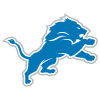
Round 1: No. 29 overall: Darius Robinson, Edge, Missouri
Round 2: No. 61 overall: T.J. Tampa, CB, Iowa State
Even at 285 pounds, Robinson showed he could stand up on the edge in his final year at Missouri. Aidan Hutchinson and Marcus Davenport could use a young apprentice, especially since Davenport is coming off a season-ending injury. The release of Cam Sutton leaves the Lions in need of a cornerback, and Tampa’s size and hard-hitting style should be appreciated by head coach Dan Campbell and defensive coordinator and former NFL star corner Aaron Glenn.

Round 1: No. 25 overall: Cooper DeJean, S, Iowa
Round 2: No. 41 overall: Roger Rosengarten, OT, Washington
The signing of Xavier McKinney fills one starting safety spot, while DeJean fits the other. His game reminds me of Brian Branch, whom the Packers passed on in last year’s draft — though they found receivers Jayden Reed and Dontayvion Wicks and defensive lineman Karl Brooks with capital accumulated via trade-downs. Rosengarten was lefty Michael Penix Jr.’s blindside protector the past two seasons. Green Bay’s starting right tackle last season, Zach Tom, has experience at left tackle, so he could make the switch if Rosengarten earns a starting role.

Round 1: No. 19 overall: Jared Verse, Edge, Florida State
Round 2: No. 52 overall: Michael Hall Jr., DT, Ohio State
Verse would be such a bargain for the Rams at No. 19. His heavy hands and relentless passion for attacking ball-carriers would instantly improve the team’s pass rush without sacrificing strength against the run. Aaron Donald’s retirement means the Rams will be looking for an active interior player to pair with second-year DT Kobie Turner. Hall is exactly that: a disruptive force in the middle of the defense who is a problem for opposing offensive linemen.

Round 1: No. 11 overall: Bo Nix, QB, Oregon
Round 1: No. 23 overall: Laiatu Latu, Edge, UCLA
Nix doesn’t possess elite physical attributes — though they are very similar to former Vikings starter Kirk Cousins’ — but the demand for quarterbacks, combined with Nix’s experience and competitive nature, could cause the Vikings to secure him at No. 11 instead of waiting for their second Thursday night selection 12 picks later. Latu suffered a serious neck injury early in his college career but led the FBS with 21.5 tackles for loss (and tied for fourth with 13 sacks) last season, flashing the quickness and heavy hands to beat tackles outside. He would be a nice add late in the first for Brian Flores’ revamped edge rushing corps.

Round 1: No. 14 overall: Olumuyiwa Fashanu, OT, Penn State
Round 2: No. 45 overall: Keon Coleman, WR, Florida State
Former first-round pick Trevor Penning struggled at left tackle, and veteran right tackle Ryan Ramczyk is dealing with a chronic knee issue, so the Saints will be looking for offensive line help early in the draft. Fashanu possesses the size (6-6, 312 pounds) and length (34-inch arms) to excel in the NFL if he can continue to grow as a player. He would seemingly be a great answer at left tackle if Penning is moved to left guard or right tackle. The Saints could also use another outside threat to pair with Chris Olave now that veteran Michael Thomas has been released. Coleman’s long speed is only average (4.61 40 at 230 pounds), but he has some open-field quickness for his size.

Round 1: No. 6 overall: Drake Maye, QB, North Carolina
Round 2: No. 47 overall: Jaden Hicks, S, Washington State
If the Giants are truly looking to move on from Daniel Jones, then Maye’s strong arm, fearless attitude and thick overall build would be a welcome sight at MetLife Stadium. His strong physical presence could remind GM Joe Schoen and head coach Brian Daboll of Josh Allen — both Schoen and Daboll were in the Bills organization when Allen arrived in Buffalo. Schoen signed Jalen Mills in free agency to help make up for the loss of Xavier McKinney, but the former Patriot could be used in a slot role, with Hicks playing in the box and deep at safety.
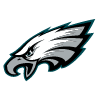
Round 1: No. 22 overall: Quinyon Mitchell, CB, Toledo
Round 2: No. 50 overall: Zak Zinter, OG, Michigan
GM Howie Roseman will likely have to make his fifth first-round trade in the last six years to get Mitchell after the corner excelled at the Senior Bowl and combine (4.33 40 and 20 bench reps at 195 pounds). He may lose the 50th pick in such a trade but would still have the 53rd selection. The Eagles took Landon Dickerson early in the second round in 2021 after he suffered an injury late in his final college season — like Zinter. The Michigan guard is a powerful and agile lineman who would step into a starting role as soon as he is able, assuming Cam Jurgens moves to center to replace Jason Kelce.

Round 1: No. 31 overall: Patrick Paul, OT, Houston
Round 2: No. 63 overall: Max Melton, CB, Rutgers
Paul is a key selection for the Niners because star left tackle Trent Williams, who’ll turn 36 years old this summer, misses a couple of contests each year, and Colton McKivitz could use some competition at right tackle. His length (36 1/4-inch arms), strength (30 bench reps) and agility (7.65 three-cone) are intriguing at 6-7 1/2 and 331 pounds. Melton’s athletic combine display (4.39 40, 40.5-inch vertical, 11-foot-4 broad) put him on the map for the first two rounds, but teams like San Francisco needing depth at cornerback should also appreciate his eight career interceptions at Rutgers.

Round 1: No. 16 overall: Byron Murphy, DT, Texas
Round 3: No. 81 overall: Jeremiah Trotter, LB, Clemson
The Seahawks add Murphy’s low center of gravity in the middle of the defensive line to improve their porous rush defense. The 6-foot, 297-pounder is an active defender with plus athleticism (4.87 40, 33-inch vertical) who will team with Leonard Williams to affect the pocket in passing situations. Trotter’s ability to recognize and attack plays in the box should make up for losing Bobby Wagner (again) and aid the front seven in more effectively stopping the run.
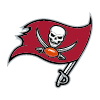
Round 1: No. 26 overall: Chop Robinson, Edge, Penn State
Round 2: No. 57 overall: Jackson Powers-Johnson, C, Oregon
Robinson’s production at Penn State was not elite; he accumulated 17.5 tackles for loss with 9.5 sacks over the past two seasons. The Buccaneers would benefit from adding his explosiveness off the edge (4.48 speed at 254 pounds), however, after releasing veteran Shaq Barrett. Powers-Johnson could be this year’s Creed Humphrey, a top center prospect falling into the second round. He is a perfect replacement for retired center Ryan Jensen because of his strength, attitude and underrated mobility in the pivot.

Round 1: No. 2 overall: J.J. McCarthy, QB, Michigan
Round 2: No. 36 overall: Jordan Morgan, OT, Arizona
Commanders GM Adam Peters was part of the 49ers group that made Brock Purdy a very relevant Mr. Irrelevant in 2022. McCarthy’s game is the closest to Purdy’s among the top four quarterback prospects, bringing competitiveness, athleticism and an unapologetic willingness to throw passes into tight windows. The release of Charles Leno Jr. makes finding a left tackle a priority. Morgan is a solid pass protector with smooth movement and a stout anchor despite average length (32 7/8-inch arms).



